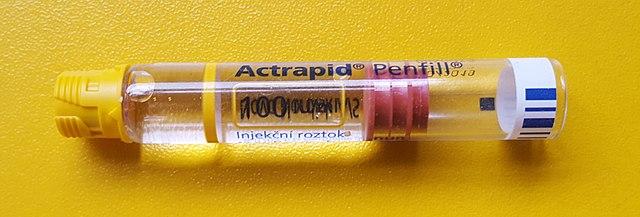All three major insulin manufacturers have announced that they will reduce the price of older generations of the medication, a victory in the decades-long “insulin for all” fight.
Over 30 million Americans are diabetic, 10% of whom have Type 1 diabetes, according to the American Diabetes Association. Type 1 diabetes is usually an autoimmune disease that causes the body to no longer create the insulin hormone, though Type 2 diabetics can also develop insulin dependence. Someone that is insulin dependent can have life-threatening effects within 12 hours without insulin.
The list price of insulin previously averaged $300 per bottle, though individual insurance coverage differs. An individual with diabetes is typically prescribed 2-12 bottles of insulin per month.
“I can’t imagine what uninsured people with type one diabetes go through because the stress alone of having diabetes is a lot,” junior Luke Clausen, a Type 1 diabetic, said.
On March 1, Eli Lilly announced they will reduce the price of Humalog by 70% and cap co-pay at $35 a month at participating pharmacies. Then, on March 9, Sen. Bernie Sanders and Rep. Cori Bush introduced the Insulin For All Act in their respective legislative chambers. If passed, the act would “prohibit insulin manufacturers from charging more than $20 per 1000 units of insulin, regardless of insulin type or delivery method.”
On March 14, Novo Nordisk followed the lead of Eli Lilly and announced they will reduce the list price of their insulins by up to 75%. On March 16, Sanofi cut the list price of Lantus, their most prescribed insulin, by 78% and capped the copay at $35 a month for people with commercial insurance.
Cassidy Hoehne, a Drake sophomore, has been Type 1 diabetic for five years. She said this is a step toward making insulin more accessible.
“It is about time pharmaceutical companies begin to lower prices,” Hoehne said. “I am fortunate enough that my monthly copay is already $35, but it makes me feel more comfortable about the future when I am no longer able to be on my parents’ insurance.”
Some have attributed the companies’ announcements to a tweet from a fake Eli Lilly account that said, “We are excited to announce insulin is free now,” which caused a tank in the company’s stock price.
While the fake Eli Lilly Twitter account brought attention to the “insulin for all” cause, decades of advocacy, news coverage of the insulin affordability crisis and pressure from the Biden administration and progressives seem to have influenced the companies’ decisions.
World Diabetes Day began on Nov. 14, 1991, in order to “draw attention to issues of paramount importance to the diabetes world,” according to their website. In 2014, T1International and the Pendsey Trust launched the #Insulin4All campaign and declared World Diabetes Day a day for advocacy and education. According to their campaign, it has become a day to fight for the care and medicine that diabetics need to live.
The price of insulin has become a talking point for many politicians, especially Democrats. People die every year due to insulin rationing, such as Jesse Lutgen – an Iowan who passed in 2018 after not being able to afford the rising price of insulin. A 2021 study estimated that more than 1.3 million American diabetics rationed their insulin due to the cost.
“It’s way too little way too late because they‘ve been killing diabetics for the past few decades despite the production price of insulin being infinitesimal compared to the price they sell it at,” Clausen said.
The price of insulin dropping is an exciting development for advocates, but organizations like T1International have stated the fight is not over. Even as manufacturers like Eli Lilly and Novo Nordisk announce their changes, advocates are still working to make insulin more accessible. $72 is far better than $300 per bottle, but insulin costs as little as $6 to manufacture according to a 2018 “Diabetes Care” study.
“There is much more work to be done in making insulin more affordable and accessible,” Hoehne said. “But this is a good start.”
For more information visit https://mutualaiddiabetes.com/







